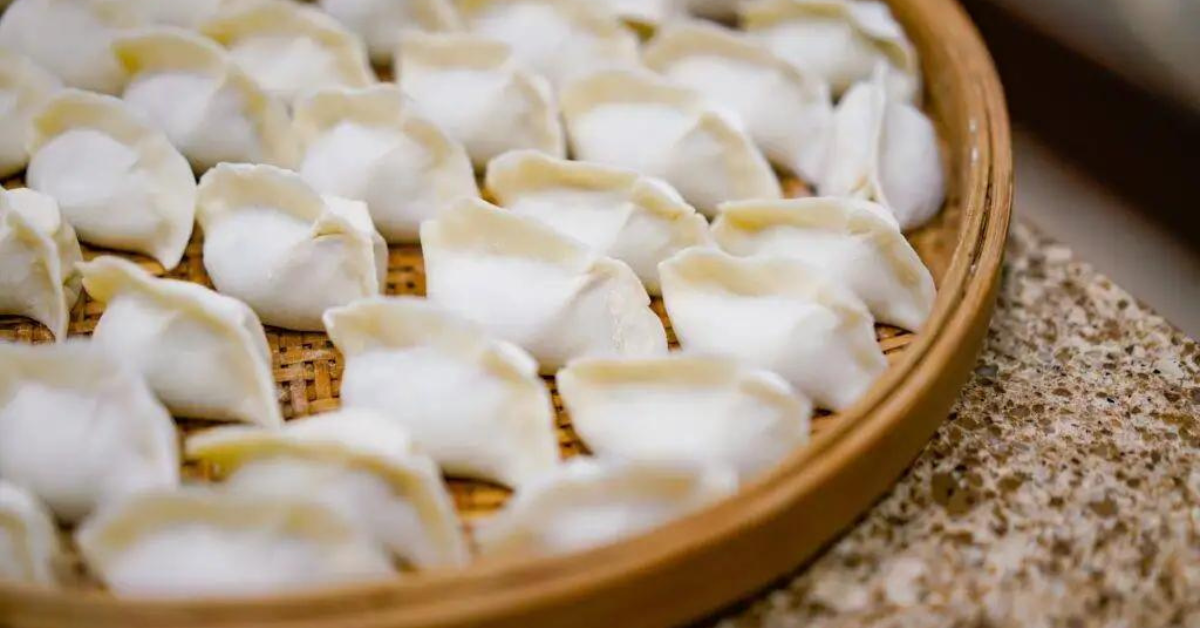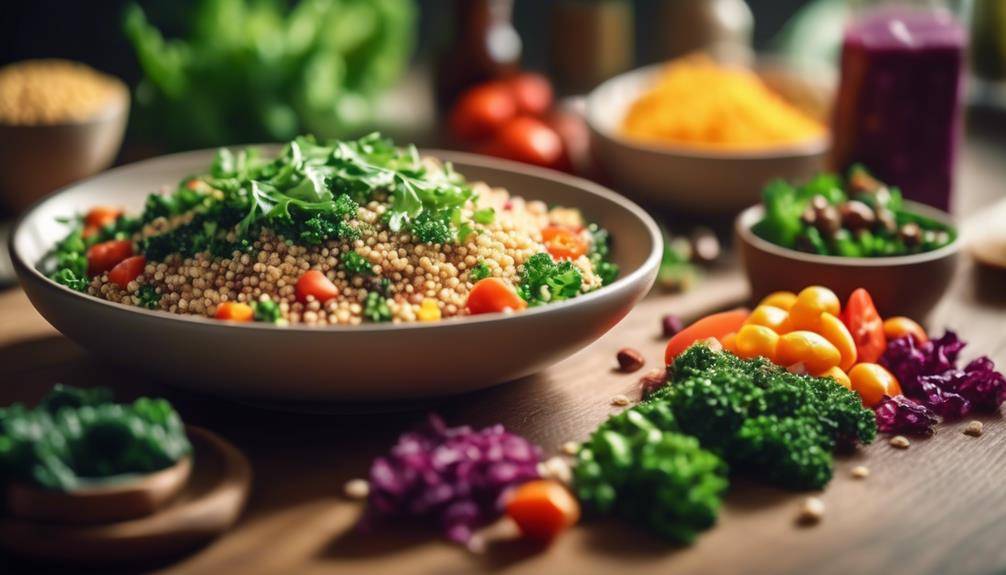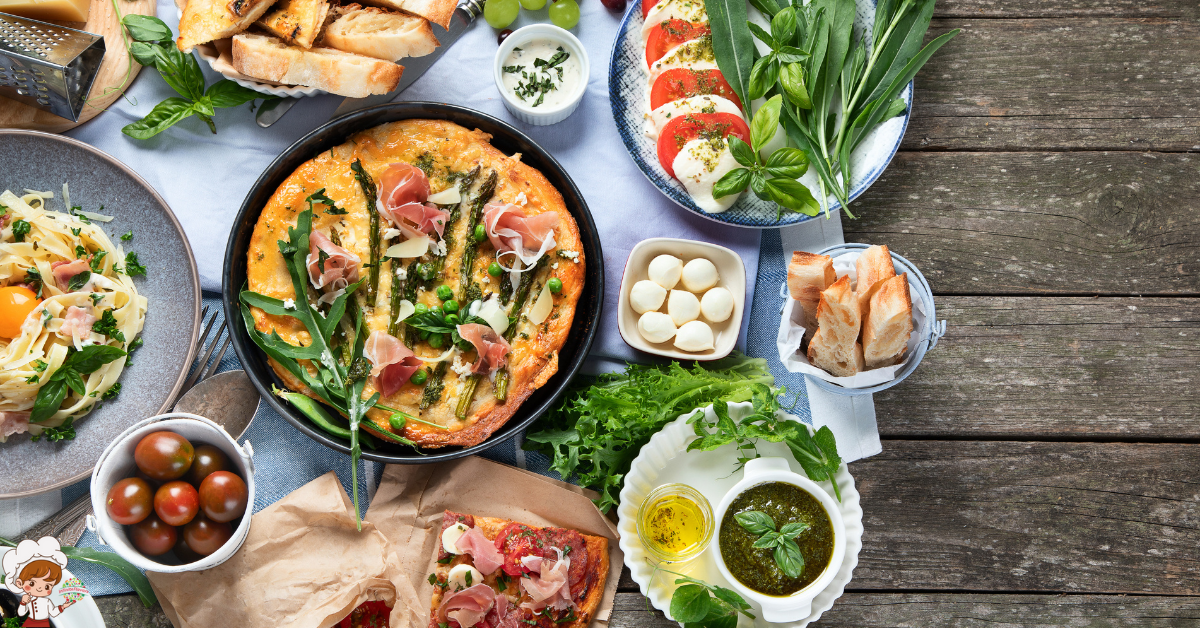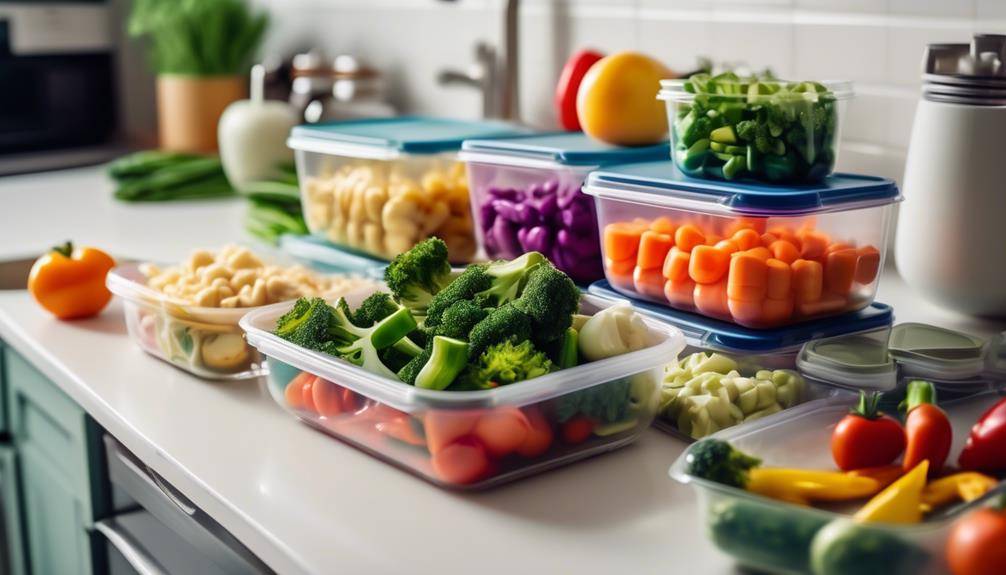Amazing Nonstick Cookware For Healthy Cooking
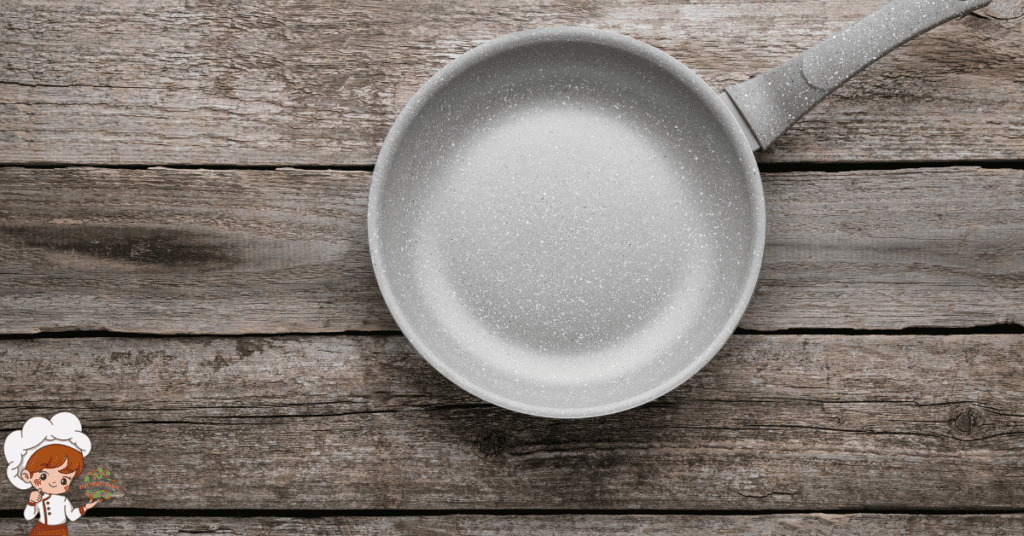
Amazing Nonstick Cookware For Healthy Cooking easy and enjoyable. With its ability to reduce the need for oil and butter, you can prepare meals that are lower in calories and fats. You’ll find yourself using alternative flavor enhancers like broth or citrus juice, which maintain the taste without adding excess calories. When choosing nonstick options, look for those free from harmful substances like PTFE and PFOA. Remember to use gentle cleaning methods and avoid metal utensils to extend the life of your cookware. Curious about specific brands and techniques that can enhance your cooking experience? There’s more to explore!
Benefits of Nonstick Cookware
Nonstick cookware makes cooking and cleaning a breeze, allowing you to enjoy healthier meals without the hassle of stuck-on food. One of the standout benefits is its impact on cooking efficiency. You’ll find that food cooks evenly, which means you can achieve that perfect sear or sauté without the worry of burning. This even heat distribution helps you maintain the nutritional integrity of your ingredients, promoting better health benefits.
Moreover, using nonstick pans means you’re likely to use less oil or butter, which can greatly reduce the calorie content of your meals. This not only supports weight management but also contributes to heart health. When you cook with less fat, you’re paving the way for a diet that’s rich in whole foods while keeping your meals deliciously satisfying.
Cleaning up after a meal is another area where nonstick cookware shines. Since food releases easily, you won’t spend your evenings scrubbing away at stubborn residue. Instead, you can simply wipe your pans clean or give them a quick rinse, freeing up your time for other activities or relaxation.
Types of Nonstick Coatings
Exploring the various types of nonstick coatings can help you choose the best cookware for your kitchen needs. When it comes to nonstick cookware, two popular options stand out: ceramic coatings and silicone coatings. Each type has its unique advantages and considerations, making it essential for you to understand their differences.
Ceramic coatings are made from inorganic materials and are often touted for being a healthier alternative to traditional nonstick surfaces. They’re free from PTFE and PFOA, which can be concerning for some cooks. Ceramic-coated cookware can withstand higher temperatures and generally offers excellent heat distribution. However, you should be cautious, as ceramic coatings can wear down over time, especially if subjected to metal utensils or abrasive cleaning tools.
On the other hand, silicone coatings are gaining popularity for their flexibility and heat resistance. These coatings are typically used for bakeware, as they allow for easy release of baked goods without sticking. Silicone-coated cookware is also dishwasher-safe, making cleanup a breeze. However, you might find that silicone coatings don’t always offer the same durability as ceramic options, so keep that in mind when making your choice.
Ultimately, selecting the right type of nonstick coating comes down to your cooking style and preferences. By understanding the benefits and limitations of ceramic and silicone coatings, you can make an informed decision that suits your culinary needs.
Healthier Cooking With Less Oil
Cooking with less oil not only reduces calorie intake but also enhances the flavors of your ingredients. By utilizing nonstick cookware, you can easily achieve delicious meals with minimal added fat. This approach encourages you to explore various cooking techniques that maintain the integrity and taste of your food while promoting healthier eating habits.
One effective way to reduce oil usage is by opting for oil alternatives. For instance, you can use broth or stock for sautéing vegetables, which not only cuts down on calories but also infuses your dishes with rich flavors. Another great option is using a splash of vinegar or citrus juice to add brightness without the added fat. These alternatives help you create vibrant meals that are both satisfying and nutritious.
Steaming is another fantastic cooking technique that requires little to no oil. It preserves the nutrients in your vegetables while maintaining their natural flavors. You can also try baking or roasting your proteins and veggies on nonstick sheets, allowing you to enjoy crisp textures without the need for excessive oil.
Experimenting with spices and herbs can also elevate your meals without relying on oil for flavor. By embracing these healthier cooking methods and oil alternatives, you’ll not only improve your overall health but also discover new tastes and textures in your cooking. So, grab your nonstick cookware and start whipping up flavorful, low-oil dishes today!
Choosing Nonstick Cookware Safely
When selecting nonstick cookware, it’s vital to take into account the materials used to ascertain safety and durability. Many nonstick coatings contain substances like PTFE or PFOA, which raise cookware material concerns. While PTFE is generally considered safe at normal cooking temperatures, overheating can release harmful fumes. PFOA, on the other hand, has been largely phased out but still lingers in older products. Always check labels to verify your cookware is PFOA-free.
To enhance your cooking experience, follow some essential nonstick safety tips. First, avoid using metal utensils, as they can scratch and damage the nonstick surface. Opt for silicone, wood, or plastic utensils instead. It’s also wise to cook on low to medium heat, as high temperatures can degrade the nonstick coating.
Next, consider the type of nonstick surface. Ceramic coatings are becoming popular as they offer a more eco-friendly alternative without harmful chemicals. However, they may not be as durable as traditional nonstick options.
Lastly, inspect your cookware regularly. If you notice any flaking or chipping, it’s time to replace it. Worn-out nonstick surfaces can lead to food sticking and potential health risks.
Key Features to Look For
When choosing nonstick cookware, you need to focus on key features that guarantee both safety and performance. Look for materials that meet safety standards and have high heat resistance to prevent damage and maintain their nonstick properties. These factors play a vital role in your cooking experience and overall health.
Material Safety Standards
To guarantee you’re choosing safe nonstick cookware, look for materials that meet stringent safety standards and are free from harmful chemicals. Always check if the cookware complies with regulatory guidelines set by organizations like the FDA or EPA. These guidelines confirm that the materials used in nonstick coatings don’t release toxic substances when heated.
Safety certifications play a significant role, too. Look for cookware that’s certified by reputable bodies, such as the American National Standards Institute (ANSI) or the National Sanitation Foundation (NSF). These certifications signify that the product has undergone rigorous testing for safety and performance.
Another important aspect is the type of nonstick coating used. Opt for options that are PFOA-free, as this chemical has been linked to health risks. Instead, consider ceramic or silicone-based coatings, which are generally regarded as safer alternatives.
Lastly, be cautious about the manufacturer’s claims. Research their reputation and customer reviews to verify they prioritize safety. By focusing on these material safety standards, you can confidently select nonstick cookware that supports healthy cooking while minimizing health concerns.
Heat Resistance Capability
Understanding the heat resistance capability of nonstick cookware is essential for guaranteeing both safety and cooking performance. When you choose cookware, you want to know it can handle high temperatures without degrading or releasing harmful substances. Look for products that have undergone rigorous heat resistance testing to verify they can withstand the heat you’ll use while cooking.
A critical aspect to evaluate is the thermal stability analysis of the materials used. This analysis reveals how well a nonstick surface can maintain its integrity at high temperatures, preventing issues like peeling or warping. Most quality nonstick cookware can tolerate temperatures up to 500°F, but always double-check the manufacturer’s specifications.
Additionally, be cautious of cookware that claims to be nonstick but doesn’t specify its heat resistance. Such products may not have undergone adequate testing, putting your health at risk. By prioritizing cookware with proven heat resistance capabilities, you’ll not only enhance your cooking experience but also ensure that your meals remain safe and healthy. So, take the time to research and choose wisely! Your kitchen deserves cookware that’s as resilient as your culinary skills.
Best Nonstick Cookware Brands
When it comes to nonstick cookware, choosing the right brand can make all the difference in your cooking experience. You’ll want to contemplate top quality brands that offer eco-friendly options, as well as those known for their durability and performance. Let’s explore some of the best brands that can elevate your kitchen game.
Top Quality Brands
Many top-quality brands offer nonstick cookware that combines durability with health-conscious materials, making your cooking experience both enjoyable and safe. When it comes to choosing the right cookware, you’ll find several top-rated brands that stand out for their innovative designs and performance.
T-fal is a classic choice, known for its durable nonstick coating and heat distribution. Their cookware often features a unique Thermo-Spot indicator, which lets you know when the pan is perfectly preheated. Another excellent option is GreenPan, which focuses on ceramic nonstick surfaces, offering a healthier alternative free from harmful chemicals. Their sleek designs not only look good but also enhance your cooking experience.
Calphalon is another top-rated brand recognized for its heavy-gauge construction and innovative nonstick technologies. Their products are designed to withstand the rigors of everyday cooking, making them a reliable choice for both home cooks and professionals alike. Finally, All-Clad combines high-quality materials with exceptional craftsmanship, ensuring your cookware lasts for years. When you opt for these brands, you’re investing in nonstick cookware that meets your health and cooking needs effectively.
Eco-Friendly Options
Choosing eco-friendly nonstick cookware not only benefits your health but also helps protect the environment. When you opt for brands that focus on sustainable materials and biodegradable coatings, you’re making a conscious decision to reduce your ecological footprint. These brands are committed to using materials that are safer for both you and the planet.
Look for cookware made from recycled aluminum or ceramic, which are often touted for their low environmental impact. Brands like GreenPan and Scanpan offer products that feature biodegradable coatings, ensuring that harmful chemicals aren’t leaching into your food. Additionally, many of these eco-friendly options are designed to last, so you won’t need to replace them as often, further reducing waste.
Another great choice is T-fal, which has introduced eco-conscious lines that utilize sustainable materials. By choosing these brands, you not only get the nonstick performance you desire but also contribute to a healthier planet. So, next time you’re shopping for nonstick cookware, consider how your choice can align with your values. With eco-friendly options, you can enjoy hassle-free cooking while caring for the environment.
Durability and Performance
Eco-friendly options are a fantastic start, but to truly enhance your cooking experience, it’s important to contemplate the durability and performance of nonstick cookware brands. You want pots and pans that not only cook your food evenly but also stand the test of time. Brands like Teflon and GreenPan have undergone extensive durability testing, proving they can handle daily use without compromising on performance longevity.
When choosing nonstick cookware, look for materials that resist scratching and wear. Hard-anodized aluminum or ceramic coatings offer excellent durability, allowing you to use metal utensils without worrying about damaging the surface. Additionally, read reviews to see how well different brands hold up over time; users often share insights about performance longevity that can guide your decision.
Nonstick Cookware Maintenance Tips
Proper maintenance of your nonstick cookware guarantees its longevity and keeps your meals healthy and delicious. To start, always use gentle cleaning methods. Avoid abrasive sponges or harsh chemicals that can scratch or damage the nonstick coating. Instead, opt for soft sponges or cloths with warm, soapy water. If you’ve got stuck-on food, soak the pan for a few minutes before gently scrubbing it away.
When it comes to drying your cookware, pat it dry rather than air drying, as moisture can lead to unwanted rust or mineral buildup. Store your nonstick pans carefully by placing a soft cloth or paper towel between them to prevent scratches.
If you notice wear on the nonstick surface, don’t panic. There are repair techniques you can try. For minor scratches, using a nonstick repair spray can help restore the surface, but always follow the manufacturer’s instructions. If damage is extensive, consider replacing the cookware to guarantee your meals remain healthy.
Lastly, avoid using high heat, as it can break down the nonstick coating over time. Instead, stick to low to medium heat settings for the best cooking results. By following these simple maintenance tips, you’ll enjoy the benefits of your nonstick cookware for years to come, guaranteeing delicious and healthy meals are always within reach.
Avoiding Common Cookware Mistakes
Many cooks unknowingly make mistakes that can compromise the quality and safety of their meals. One of the most common mistakes is using metal utensils on nonstick surfaces. These utensils can scratch the coating, reducing its effectiveness and potentially releasing harmful particles into your food. Instead, opt for silicone, wood, or plastic utensils to guarantee your cookware remains in prime condition.
Another frequent error involves cooking at excessively high temperatures. Nonstick cookware is designed for lower heat settings, so cranking up the heat can not only damage the nonstick surface but also lead to the release of toxic fumes. Always preheat your cookware on medium heat and adjust as needed for peak cooking.
You might also overlook proper cookware care. Ignoring manufacturer instructions can lead to premature wear and tear. Make sure to hand wash your nonstick pans with a gentle sponge and avoid abrasive cleaners. This simple step can prolong the lifespan of your cookware considerably.
Lastly, don’t forget to avoid overcrowding your pans while cooking. This can lead to uneven cooking and increased sticking, as food releases moisture and creates steam. Instead, give your ingredients enough space to cook evenly, enhancing both flavor and texture.
Cooking Techniques for Nonstick
Now that you know how to avoid common mistakes with nonstick cookware, mastering the right cooking techniques can elevate your culinary skills and guarantee your meals turn out perfectly every time. One of the best methods to use is steam cooking. This technique not only preserves the nutrients in your food but also helps you achieve a tender texture without adding extra fat. To steam, simply add a small amount of water to your nonstick pan, place your ingredients inside, cover, and let the steam work its magic. You’ll enjoy delicious, healthy meals with minimal effort.
Another vital technique is sautéing. When using sauté techniques with nonstick cookware, it’s important to preheat your pan before adding your ingredients. This guarantees even cooking and prevents sticking. Use a small amount of oil—just enough to coat the bottom of the pan. When the oil shimmers, you’re ready to add your vegetables or proteins. Stir frequently to promote even browning and prevent burning.
Don’t forget to adjust your heat according to what you’re cooking. For delicate foods like fish or eggs, a lower heat is best, while tougher vegetables can handle a higher temperature. By using steam cooking and proper sauté techniques, you’ll maximize the performance of your nonstick cookware, making sure your meals are both healthy and flavorful. So, get cooking and enjoy the benefits of these techniques!
Nonstick Cookware for Different Foods
When it comes to cooking various foods, nonstick cookware shines by allowing you to achieve perfect results with minimal effort. Its smooth surface prevents food from sticking, making it ideal for a wide range of dishes. You’ll find that nonstick cookware varieties, such as frying pans, sauté pans, and griddles, cater to different cooking needs and food types.
For delicate items like eggs and pancakes, a nonstick frying pan is your best bet. It guarantees that your breakfast turns out fluffy and intact without any sticky residue. When sautéing vegetables, a nonstick sauté pan allows you to achieve that perfect caramelization while minimizing oil use. You can enjoy your veggies’ natural flavors without the hassle of cleanup.
If you’re cooking proteins, such as fish or chicken, consider using a high-quality nonstick skillet. This makes flipping and serving a breeze, preventing your meal from falling apart. Nonstick cookware also excels at creating sauces and reductions, as it prevents sticking and allows for easy deglazing.
When it comes to baking, nonstick baking sheets and pans are perfect for cookies and brownies, guaranteeing even cooking and easy removal. You can experiment with various recipes, knowing that your nonstick options will support your culinary adventures. By understanding the ideal food pairings with nonstick cookware, you’ll elevate your cooking while keeping the process simple and enjoyable.
Environmental Impact of Nonstick
Contemplating the environmental impact of nonstick cookware is essential, as it involves understanding the materials and chemicals used in its production and the potential effects on our planet. Traditional nonstick coatings, often made with polytetrafluoroethylene (PTFE) and perfluorooctanoic acid (PFOA), raise concerns about their longevity and toxicity. When these substances break down, they can release harmful chemicals into the environment, affecting air and water quality.
You might want to reflect on opting for nonstick cookware made from sustainable materials. Many manufacturers now offer alternatives that are free from PFOA and PTFE, using safer coatings derived from natural minerals or ceramic. These options not only reduce the risk of harmful emissions but also contribute to a healthier cooking experience for you and your family.
Recycling options for nonstick cookware can also play a significant role in minimizing environmental impact. While traditional nonstick pans can be challenging to recycle due to their coatings, newer products made from sustainable materials may have better recycling pathways. Check with your local recycling program to see if they accept these items or if the manufacturer offers a take-back program.
Signs Your Cookware Needs Replacement
If you notice scratches or damage on your nonstick cookware, it’s time to contemplate a replacement. Discoloration and stains can also indicate that your pots and pans are past their prime. Keeping an eye out for these signs will help guarantee your cooking remains safe and healthy.
Scratches and Damage
Scratches and visible damage on your nonstick cookware can indicate it’s time for a replacement to guarantee safe and healthy cooking. Over time, even the best nonstick surfaces can wear down, leading to a compromised cooking experience. When you notice scratches, it’s not just an aesthetic issue; those scratches can release harmful substances into your food.
To maintain your cookware, practice scratch prevention techniques, like using wooden or silicone utensils instead of metal. This simple step can greatly reduce the risk of damage. If you see peeling or flaking, it’s essential to prioritize damage control by replacing the cookware immediately.
Don’t wait until your pans are in poor condition to take action. Regularly inspect your nonstick surfaces for signs of wear. If you find scratches or any other visible damage, consider it a red flag. Investing in new nonstick cookware isn’t just about aesthetics; it’s about ensuring your meals are prepared safely and healthily. Remember, your health should always come first, so keep an eye on those scratches and replace your cookware when necessary.
Discoloration and Stains
Discoloration and stubborn stains on your nonstick cookware are clear signs that it’s time to think about a replacement for your kitchen essentials. Over time, various discoloration causes, like high heat or chemical reactions with certain foods, can leave your pots and pans looking less than pristine. These changes not only affect the aesthetics but can also impact the nonstick properties of your cookware.
If you’ve tried stain removal techniques and still see those pesky marks, it’s a strong indication that your cookware’s surface has deteriorated. While some stains may seem removable with scrubbing or soaking, persistent discoloration means the nonstick coating may be compromised. As a result, food can stick more easily, leading to unhealthy cooking experiences and increased frustration.
Comparing Nonstick to Other Cookware
When you consider the options for cookware, nonstick surfaces often stand out for their ease of use and low-fat cooking benefits. However, it is crucial to compare nonstick cookware with other materials to make an informed choice for your kitchen.
Traditional stainless steel is a popular alternative. It’s durable, resistant to scratching, and works well for browning and deglazing. But, you might notice that food can stick if you don’t use enough oil or heat it properly, which can lead to a bit more cleanup. Cast iron is another option. It’s excellent for heat retention and can add a unique flavor to your dishes, but it requires seasoning and regular maintenance to keep its nonstick properties.
Then there are ceramic nonstick alternatives that promise to be free from harmful chemicals. While they’re often easier to clean and are less prone to scratching, they may not last as long as traditional nonstick cookware under high heat.
Each of these cookware materials has its pros and cons, but nonstick surfaces really shine when it comes to convenience. If you’re looking to cook healthier meals with less oil, nonstick is hard to beat. Plus, the reduced mess means you’ll spend less time scrubbing and more time enjoying your creations. Ultimately, your choice will depend on your cooking style and preferences, but knowing the differences can help you make the best decision for your kitchen.
Recipes Perfect for Nonstick Surfaces
Nonstick surfaces are perfect for a variety of recipes that benefit from easy food release and minimal cleanup. When it comes to healthy breakfasts, you can whip up fluffy scrambled eggs or a veggie-packed omelet without worrying about sticking. Just heat your nonstick skillet, add a splash of olive oil, and toss in your favorite vegetables and eggs. You’ll have a nutritious meal ready in minutes, and cleanup will be a breeze.
For quick dinners, consider sautéing lean proteins like chicken or shrimp. With nonstick cookware, you can achieve a beautiful sear without the need for excessive oil. Simply season your protein, heat your pan, and cook until golden brown. Add some fresh vegetables to the mix, and you’ll have a balanced meal that’s both delicious and healthy.
Stir-frying is another fantastic option for nonstick surfaces. Toss in your choice of protein, an array of colorful veggies, and a splash of low-sodium soy sauce for a flavorful dish that’s ready in no time. Plus, the nonstick surface makes it easy to slide everything onto your plate without any fuss.
Lastly, pancakes and waffles are a delightful way to enjoy a healthy breakfast. Use nonstick batter dispensers or ladles to pour your mix, ensuring perfect shapes without any sticking. With these recipes, you’ll not only enjoy delicious meals but also save time on cleanup, allowing you to focus on what truly matters—delicious, healthy cooking!
Storing Nonstick Cookware Properly
When you store your nonstick cookware, it’s vital to stack them carefully to avoid scratches. Using soft liners between pans can provide extra protection and keep your cookware in top shape. Proper storage not only extends the life of your cookware but also guarantees it performs well every time you cook.
Stack Carefully to Prevent Scratches
To protect your nonstick cookware from scratches, stack them carefully with protective liners or cloths in between each piece. This simple technique is essential for maintaining the integrity of your cookware’s nonstick surface. Use soft materials that won’t damage the coating, ensuring your pots and pans stay in prime condition.
When adopting stacking techniques, consider your cabinet space and how often you use each piece. Place the cookware you use most frequently on top, while keeping the less-used items at the bottom. This not only makes for easier access but also helps minimize the risk of scratches during retrieval.
For protective storage, try to avoid overcrowding your pots and pans. When they’re tightly packed, it’s more likely they’ll rub against each other and cause damage. If you have limited space, consider investing in a pot rack or a hanging storage solution to keep your nonstick cookware safe and scratch-free. With these practices, you can extend the life of your nonstick cookware, ensuring it serves you well for years to come. Remember, a little care goes a long way in preserving your investment in healthy cooking.
Use Soft Liners for Protection
Using soft liners between your nonstick cookware not only prevents scratches but also prolongs the life of their coatings. When you stack your pots and pans, those soft liners act as a buffer, keeping surfaces from rubbing against each other. This simple addition can save you from costly replacements and maintain the nonstick properties you rely on.
When storing your cookware, choose soft liners made from materials like felt or silicone. These offer the best protection without adding bulk. You can easily cut them to fit the size of your cookware, ensuring a snug fit. This little step in cookware protection makes a big difference in keeping your kitchen essentials looking and functioning like new.
Frequently Asked Questions: Amazing Nonstick Cookware For Healthy Cooking
Can Nonstick Cookware Be Used on Induction Stovetops?
Yes, you can use nonstick cookware on induction stovetops, but it must have induction-compatible materials like stainless steel or cast iron. Check the bottom for a magnetic layer to guarantee proper induction functionality.
Are There Any Specific Cleaning Products to Avoid for Nonstick Cookware?
You should avoid abrasive cleaners and scouring pads when cleaning nonstick coatings. Instead, use gentle cleaning methods like soft sponges and mild detergents to maintain the integrity of the nonstick surface and guarantee its longevity.
How Long Does Nonstick Cookware Typically Last?
Nonstick cookware typically lasts between five to ten years, depending on durability factors like usage frequency and care. Look for replacement signs such as scratches, peeling, or reduced nonstick performance to know when to replace yours.
Is It Safe to Use Metal Utensils With Nonstick Cookware?
Using metal utensils with nonstick cookware isn’t safe, as they can scratch and damage the coating. To guarantee your cookware’s safety and longevity, stick to silicone, wood, or plastic utensils instead.
Can Nonstick Cookware Affect the Flavor of Food?
Yes, nonstick cookware can affect food’s flavor. The nonstick coatings often prevent food from browning properly, which can limit flavor enhancement. You’ll notice a difference in taste if you’re used to traditional cooking methods.
Conclusion
To sum up, nonstick cookware can be a game-changer for your healthy cooking routine. By choosing the right type and caring for it properly, you’ll enjoy delicious meals with less oil, making it easier to maintain a balanced diet. Remember to keep an eye on its condition and replace it when necessary. With the right recipes and storage tips, you’ll maximize the benefits of your nonstick cookware, making cooking not just healthier, but also more enjoyable!



